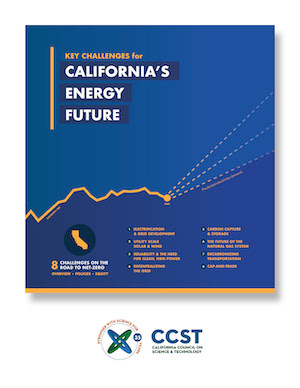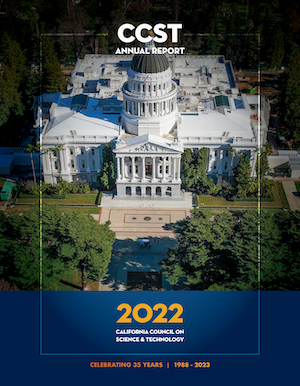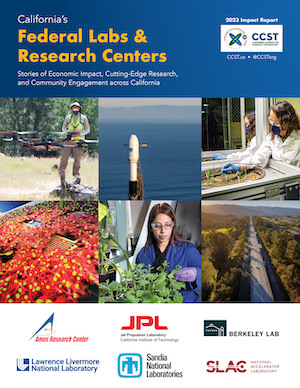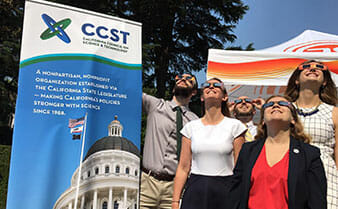2021 Impact Report
California's Federal Labs & Research Centers
Six federal laboratories and science centers have formal partnerships with CCST. The following reports offer a glimpse of the resources and expertise that each lab can offer to California’s decision makers, including examples of ongoing collaborations with universities, businesses, and agencies, and where federal research has been successfully translated into policy advice or industry solutions.
NASA
• NASA Ames Research Center
• NASA Jet Propulsion Laboratory
DOE
• Lawrence Berkeley National Laboratory
• Lawrence Livermore National Laboratory
• Sandia National Laboratories/California
• SLAC National Accelerator Laboratory
Economic Impacts
$0
Billion$0
Billion0
Employees0
PhD Scientists & Engineers$0
Billion to CA Businesses$0
Million to Small BusinessesNASA Ames Research Center
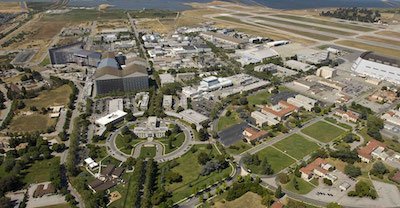
Moffett Field, Santa Clara County (AD-24, SD-13)
Eugene L. Tu, PhD, Center Director
Lisa Lockyer, Government Affairs [email protected]
Matt Buffington, Public Affairs [email protected]
NASA’S PORTAL TO SILICON VALLEY
NASA Ames Research Center (NASA Ames) was established in 1939 as the second laboratory of the National Advisory Committee for Aeronautics (NACA) and named for the chair of NACA, Joseph S. Ames. With the formation of NASA in 1958 the Laboratory was renamed the NASA Ames Research Center. It was located at Moffett Field in Sunnyvale, California, now the heart of Silicon Valley. Originally, NASA Ames research focused on construction of increasingly sophisticated wind tunnels, research aircraft, and methods of theoretical aerodynamics. Today NASA Ames is a leader in nanotechnology, information technology, fundamental space biology, biotechnology, thermal protection systems, and human factors research. NASA Ames serves as an active portal bringing together specialized NASA R&D along with a research cluster of affiliated high-tech companies, universities and other federal laboratories to advance both NASA’s mission and the American economy.
By the Numbers
0
Employees$0
Billion (2017)$0
Million (2017)$0
Million to CA Businesses (2017)$0
Million to Small Businesses (2017)0
Companies (Since 1997)NASA Ames provides expertise to California through a highly talented cadre of scientists and engineers experienced in leveraging their unique capabilities with renowned research universities, social entrepreneurs, and top business executives. The Ames presence in Silicon Valley offers California easy access to NASA technologies, facilities, and expertise. NASA Ames and its partners provide California with the opportunity to quickly gain access to a wide range of potential solutions to challenging regional concerns.
NASA Ames generates quantifiable financial benefits in California as a result of its activities. Operating activities at NASA Ames provides the state with $1.65 billion in annual economic benefits and supports approximately 9,400 permanent jobs.
The NASA Small Business Innovation Research/ Small Business Technology Transfer (SBIR/STTR) programs provided more than $40 million in Phase I and Phase II awards to California firms, resulting in an estimated economic impact of more than $83 million and 378 jobs in 2015.
NASA Ames’ service to both the state and region includes:
1. Being a trusted source of subject matter experts.
2. Unique aerospace and earth science technologies.
3. Advanced modeling and simulation capabilities.
4. Facilities testing and intellectual property for supporting collaborations leading to regional economic development.
Ames develops groundbreaking technologies for NASA missions, while seeking to promote collaboration with U.S. industry. Many NASA- developed technologies and discoveries have practical applications and significant future commercial value through the creation of new industries, products, services, and jobs (e.g., small inexpensive satellites).
NASA Ames is deeply committed to collaborations, both public and private. Ames has partnered with the California Department of Water Resources, the California Department of Parks, the California Natural Resources Agency, and the San Francisco Bay Conservation and Development Commission. Such collaborations offer breakthroughs each year for the benefit of the American public. As such, NASA Ames continues to expand partnerships that can leverage taxpayer-funded NASA research and technology for the benefit of the State of California and the country.
While most people equate NASA with space exploration, the agency helps set standards across the general aviation industry and influences how Americans fly every day. Empirical Systems Aerospace, Inc. of San Luis Obispo, California, received SBIR awards to increase efficiency in commercial aircrafts, resulting in lower fuel costs and fewer harmful emissions. The work has led to follow-on NASA contracts, subcontracts with the Department of Defense, and increased collaboration with many of the nation’s top companies.
“How NASA Ames Is Helping the FAA Brace for the Rise of Delivery Drones” – KQED, July 8, 2019
“Astronauts on the moon and Mars may grow their homes there out of mushrooms, says NASA” – CNN, January 17, 2020
“Looking for Another Earth? Here Are 300 Million, Maybe” – New York Times, November 5, 2020
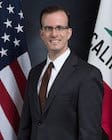 “NASA Ames is a vital source of innovation in the Silicon Valley region. The scientific breakthroughs developed there are a great boon to all Californians.” — Assemblymember Marc Berman (D-Palo Alto)
“NASA Ames is a vital source of innovation in the Silicon Valley region. The scientific breakthroughs developed there are a great boon to all Californians.” — Assemblymember Marc Berman (D-Palo Alto)
 “Thanks to the ingenuity of NASA Ames’ research and development, the technology pioneered for exploration of space also has important applications in meeting the challenges we face on Earth. From COVID to climate change, and water treatment to disaster response, NASA Ames offers solutions that can help us battle the emergencies that confront us today and aid us in building resilience for our future.” — Senator Josh Becker (D-San Mateo)
“Thanks to the ingenuity of NASA Ames’ research and development, the technology pioneered for exploration of space also has important applications in meeting the challenges we face on Earth. From COVID to climate change, and water treatment to disaster response, NASA Ames offers solutions that can help us battle the emergencies that confront us today and aid us in building resilience for our future.” — Senator Josh Becker (D-San Mateo)
NASA Jet Propulsion Laboratory
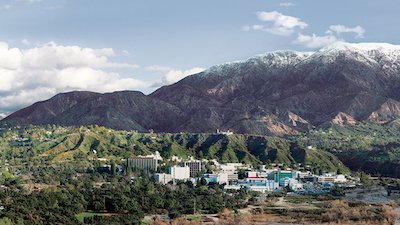
www.jpl.nasa.gov
Pasadena/La Cañada Flintridge, Los Angeles County (AD-43, SD-25)
Michael Watkins, PhD, Director
Patty Rhee, Government Affairs [email protected]
FROM DEFENSE TO DISCOVERY
NASA JPL’s roots date to the 1930s, when students at Caltech — collectively known as the “Suicide Squad” — gathered to test rocket engines near Pasadena, California.
During the 1940s and 1950s, JPL grew as it developed rockets and other technologies for the U.S. Army. JPL designed, built, and operated America’s first satellite, Explorer 1, launched in 1958. Explorer 1 also delivered the first science finding from space — the discovery of Earth’s Van Allen radiation belts. Later that year, Congress established NASA, and JPL was transferred to the space agency. Since then, NASA JPL has sent robotic spacecraft to all of the planets in the Solar System, and is responsible for all four rovers that have explored the surface of Mars. In addition, NASA JPL conducts significant programs in earth sciences, spacebased astronomy, and technology research and development.
By the Numbers
0
Employees0
Scientists & Engineers$0
Billion (2017)$0
Million to CA Businesses (2017)$0
Million to Small Businesses (2017)0
Patents Registered (Since 2007)Home to Mars rovers, space telescopes and an array of Earth-orbiting satellites, the NASA Jet Propulsion Laboratory (JPL) is one of NASA’s premier research facilities. Beginning in the 1960s, NASA JPL made news as it created America’s first satellite and sent the first robotic spacecraft to the planets. As of 2017, NASA JPL is responsible for 19 spacecraft and 10 major instruments carrying out active missions. In addition, NASA JPL developed and manages NASA’s Deep Space Network, a worldwide system of antennas that communicate with interplanetary spacecraft.
As a federally funded research and development center (FFRDC), NASA JPL is staffed and managed for NASA by the California Institute of Technology (Caltech). This unique relationship creates an intellectual infusion with a university campus whose faculty and alumni have garnered 31 Nobel Prizes, 53 National Medals of Science, and 12 National Medals of Technology. This Caltech-JPL synergy is boosted by cooperative initiatives, dedicated research seed funding, and joint-faculty appointments. Furthermore NASA JPL’s research is conducted in 1,138 laboratory or technical rooms in 76 buildings on the main campus and extends into space with 29 currently active missions.
NASA JPL’s expertise is of particular potential benefit to California in two broad areas: 1) regional decision support systems based on Earth observations and models, and 2) advanced technology and earth science.
Resources include airborne and spaceborne instruments that remotely:
1. Measure ground subsidence due to aquifer discharge and recharge or natural events.
2. Provide multi-decade observations of sea level rise.
3. Measure changes in coastal regions due to erosion and changes in plant health.
4. Detect and help quantify greenhouse gas emissions and characterize ozone sources.
5. Quantify with high accuracy water stored as snow.
6. Assess the health of forest ecosystems for post- fire land management restoration decisions.
7. Detect changes and threats to critical infrastructure such as the Bay-Delta levees.
8. Provide information on damage extent for emergency response teams following natural disasters.
NASA JPL is advancing technology in the areas of energy systems, robotics, miniaturized sensors, artificial intelligence, autonomy and remote sensing. These advances in natural hazards, climate change and ecosystems science will offer deep insights for California policymakers.
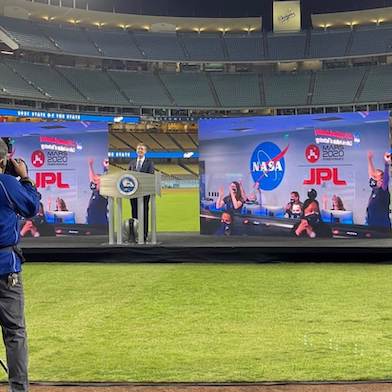
“NASA’s Perseverance rover makes safe landing on Mars” – Los Angeles Times, February 18, 2021
 “The dedicated scientists at NASA/ JPL are continuously pushing the boundaries of human discovery, from a mission to Mars to new insights into how Earth’s lands, oceans, and climate are evolving. The discoveries and technologies made there improve the lives of all Californians and make us more resilient when confronting natural disasters and climate change. And, how about the amazing Perseverance and its helicopter!” — Senator Anthony Portantino (D-La Canada Flintridge)
“The dedicated scientists at NASA/ JPL are continuously pushing the boundaries of human discovery, from a mission to Mars to new insights into how Earth’s lands, oceans, and climate are evolving. The discoveries and technologies made there improve the lives of all Californians and make us more resilient when confronting natural disasters and climate change. And, how about the amazing Perseverance and its helicopter!” — Senator Anthony Portantino (D-La Canada Flintridge)
 “In meeting the challenges of robotic space exploration, JPL brings new knowledge to California that keeps our state a world leader in science and technology. JPL’s research and talented workforce are an asset to the 43rd Assembly District and greatly enhance our economic vitality.”— Assemblymember Laura Friedman (D-Glendale)
“In meeting the challenges of robotic space exploration, JPL brings new knowledge to California that keeps our state a world leader in science and technology. JPL’s research and talented workforce are an asset to the 43rd Assembly District and greatly enhance our economic vitality.”— Assemblymember Laura Friedman (D-Glendale)
Lawrence Berkeley National Laboratory

www.lbl.gov
Berkeley, Alameda County (AD-15, SD-09)
Michael Witherell, PhD, Director
Jim Hawley, State and External Relations [email protected]
Dan Krotz, Strategic Communications [email protected]
A BEACON OVER BERKELEY
Lawrence Berkeley National Laboratory (Berkeley Lab) was founded in 1931 by Ernest Orlando Lawrence. Considered the father of multidisciplinary team science, Lawrence was a University of California (UC) Berkeley physicist who won the 1939 Nobel Prize in physics for his invention of the cyclotron, a circular particle accelerator that opened the door to high-energy physics and the foundation of today’s Nobel Prize- winning accelerators such as the Large Hadron Collider.
Today, Berkeley Lab is managed and operated by the University of California System for the Department of Energy (DOE). Berkeley Lab’s close relationship with UC Berkeley brings the intellectual capital of the university’s faculty, postdocs and students to bear on the nation’s great scientific questions, a partnership that underpins the lab’s extraordinary scientific productivity.
By the Numbers
0
Employees0
Scientists & Engineers0
& Postdocs$0
Billion$0
Million$0
Million to CA Businesses$0
Million to Small Businesses (2017)0
Patents Issued (Last 10 Years)0
Licenses (Last 10 Years)0
Startups Based on TechAt the forefront of science, the Lawrence Berkeley National Laboratory (Berkeley Lab) is committed to nonclassified research. Berkeley Lab scientists search for cleaner, more reliable sources of energy while making innovations in energy efficiency, green building design, and electric grid modernization. They study the Earth to understand why the climate is changing and how that impacts sectors such as agriculture.
The Berkeley Lab also designs, builds, and houses some of the world’s most powerful microscopes, x-ray beams, and supercomputers. Berkeley Lab researchers aim to coax more power from solar cells, build better batteries, and develop clean biofuels for the future. They study questions as awe-inspiring as the formation of the universe, as relevant as water production and desalination, and as important as cybersecurity. They also can provide expertise on oil and gas geosciences, genetic analysis, and chemical and materials sciences.
The Berkeley Lab partners with a number of California agencies — including the California Energy Commission, the California Geologic Energy Management Division, the Department of Water Resources, California Public Utilities Commission, and the California Air Resources Board — to support our state’s ambitious clean energy and environmental goals.
Berkeley Lab houses many “user facilities” — state-of-the art lasers, instruments, and computers available for industry and university use. In 2016, more than 11,700 researchers (40 percent from California research institutions) accessed these facilities, representing nearly one third of the total for all DOE user facility traffic nationwide. Work conducted at Berkeley Lab user facilities has led to the development of better medicines, new materials, and more efficient solar cells and batteries.
The user facilities at the Berkeley Lab include:
1. The Advanced Light Source produces extremely bright x-ray beams for examining the atomic and electronic structure of materials. Applications range from environmental, material science, and biology.
2. Molecular Foundry is the DOE’s largest nanoscience center, allowing researchers to engineer new materials from fuel cell components to proteins.
3. National Energy Research Scientific Computing Center (NERSC) is the world’s sixth most powerful supercomputer.
4. Energy Sciences Network (ESnet) provides reliable, high-bandwidth connections that link scientists at federal labs, universities, and other institutions.
5. The Joint Genome Institute helps researchers solve energy and environmental challenges with high throughput genomic capabilities and data analysis.
Too numerous to detail, other notable user facilities include the FLEXLAB, the Advanced Biofuels Process Demonstration Unit, and other assets available to government, university, and corporate users.
“The Superpowers of Super-thin Materials” – The New York Times, January 7, 2020
“Kill Your Gas Stove” – The Atlantic, October 15, 2020
“Schools (and Children) Need a Fresh Air Fix” – Wired, October 14, 2020
 Berkeley Lab is home to world- renowned scientific leaders. These brilliant minds are crafting the technology we need — today and tomorrow — to advance our lives, protect our planet, and enhance our economy. Berkeley Lab researchers are on the cutting edge of technological transformation, for California and the world.” — Senator Nancy Skinner (D-Berkeley)
Berkeley Lab is home to world- renowned scientific leaders. These brilliant minds are crafting the technology we need — today and tomorrow — to advance our lives, protect our planet, and enhance our economy. Berkeley Lab researchers are on the cutting edge of technological transformation, for California and the world.” — Senator Nancy Skinner (D-Berkeley)
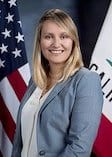 “Berkeley Lab is a world leading scientific institution. Its facilities are used by researchers across the state. Its scientists are helping lead the way on new technologies and innovations to tackle big challenges—from climate change, to energy storage and clean water, creating jobs for our state.” — Assemblymember Buffy Wicks (D-Oakland)
“Berkeley Lab is a world leading scientific institution. Its facilities are used by researchers across the state. Its scientists are helping lead the way on new technologies and innovations to tackle big challenges—from climate change, to energy storage and clean water, creating jobs for our state.” — Assemblymember Buffy Wicks (D-Oakland)
Lawrence Livermore National Laboratory
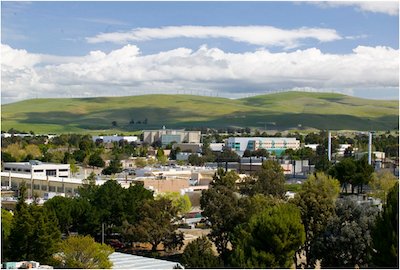
www.llnl.gov
Livermore, Alameda County (AD-16, SD-07)
Kim Budil, PhD, Director
Scott F. Wilson, State Government Liaison [email protected]
Lynda Seaver, Public Affairs [email protected]
SCIENCE AND SECURITY IN THE ATOMIC AGE
Our founders created Lawrence Livermore National Laboratory (LLNL) in 1952 as a “new ideas” lab, a place where innovative science and technical solutions to the nation’s most difficult security challenges and human progress are created. We continue this tradition, living our motto, “Science and Technology on a Mission,” by pushing the frontiers of what is or might be scientifically and technically possible.
Team science is a hallmark of LLNL. Effective team science is enabled through a healthy research culture of respect, openness, workforce diversity and interdisciplinary collaboration. Mission delivery requires talented and committed staff, state-of-the-art facilities and equipment, and robust partnerships with colleagues at other national laboratories, and in government, universities and industry. These factors have been essential to the LLNL’s many achievements, and continue to be indispensable for the Laboratory’s vital missions and the advancement of science and technology.
By the Numbers
0
Employees0
Scientists and Engineers0
Post-docs0
Level Students$0
Billion$0
Billion$0
Million to CA Businesses0
Commercial LicensesLLNL has a robust technology transfer program built on successful, mutually beneficial relationships with private industry. Access to Laboratory technologies, capabilities and intellectual property enables our industry partners to accelerate commercialization of technologies and products that strengthen regional and U.S. competitiveness and innovation. In return, research and development partnerships with industry enable LLNL to develop and sustain capabilities that support its national security mission.
LLNL has deep and longstanding relationships with leading academic institutions, notably the University of California, which serve as research partners and workforce pipelines for many of its most sought-after positions. We in turn seek to inspire the next generation of researchers by providing opportunities for teachers and students to develop new skills and gain experience by participating in our various education and internship programs
Our strong science and technology foundation developed for national security missions is applicable to solving many of the challenges we face in California. A sampling of these research areas are listed below, and additional competencies can be found here.
1. Energy Security and Climate Resilience - Secure and expand the supply and delivery of affordable, clean energy with technologies resilient to evolving natural and adversarial risks.
2. Advanced Materials and Manufacturing - With a key focus on additive manufacturing, which is transforming manufacturing by producing novel materials with new structural, thermal, electrical, chemical, and photonic properties with an added goal of revolutionizing the design-build-test cycle. Examples include high-performance optics, biocompatible devices, advanced battery components, and radiation detection materials.
3. High Performance Computing for Manufacturing/Innovation/Energy (HPC4Mfg) Program - Unites the world- class computing resources and expertise of Department of Energy national laboratories with U.S. manufacturers to deliver solutions that could revolutionize U.S.
4. Laser and Optical technologies - Discovering industrial applications that strengthen U.S. economic security, including laser melting, precise material removal, precision heat treatment, mechanical strengthening such as laser peening, and heat-resistant optics.
5. Forensic Science Center - One of only two U.S. laboratories to be internationally certified for identifying chemical warfare agents. The center also develops new tools for intelligence, law enforcement, homeland security, and healthcare
“California Can Be Carbon Neutral in 25 years—with Drastic Action” – Scientific American, February 1, 2020
“El Capitan supercomputer to blow past rivals, with 2 quintillion calculations per second” – CNET, March 4, 2020
 “LLNL is a huge contributor to California’s economy, providing high-end jobs, bringing in federal research dollars, and forming academic and industrial partnerships. I never hesitate to hold up LLNL as a shining example of the technological and entrepreneurial excellence that the Bay Area can offer.” — Senator Steve Glazer (D-Orinda)
“LLNL is a huge contributor to California’s economy, providing high-end jobs, bringing in federal research dollars, and forming academic and industrial partnerships. I never hesitate to hold up LLNL as a shining example of the technological and entrepreneurial excellence that the Bay Area can offer.” — Senator Steve Glazer (D-Orinda)
 “LLNL has been a leader in national security and fundamental science for generations, and its many contributions, inventive technologies, and passion for STEM education have helped shape California’s and the East Bay region’s thriving innovation ecosystems. We’re proud to have such an important institution as part of our community.” — Assemblymember Rebecca Bauer-Kahan (D-Orinda)
“LLNL has been a leader in national security and fundamental science for generations, and its many contributions, inventive technologies, and passion for STEM education have helped shape California’s and the East Bay region’s thriving innovation ecosystems. We’re proud to have such an important institution as part of our community.” — Assemblymember Rebecca Bauer-Kahan (D-Orinda)
Sandia National Laboratories/California
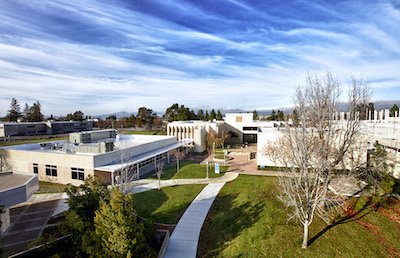
www.sandia.gov
Livermore, Alameda County (AD-16, SD-07)
Andrew McIlroy, PhD, Integrated Security Solutions, Associate Labs Director for California
Patrick Sullivan, Government Relations [email protected]
Michael Padilla, Media Relations [email protected]
NATIONAL SECURITY FROM “A” TO “Z”
From its origins as a single-mission engineering organization for nonnuclear components of nuclear weapons, the Sandia National Laboratories now has multiple programs involved in a broad spectrum of national security issues. One of three National Nuclear Security Administration research and development laboratories, Sandia’s underlying mission is to develop advanced technologies to ensure global peace.
Sandia began in 1945 as the “Z-Division” — the weapons design, testing, and assembly branch of Los Alamos National Laboratory in New Mexico. It officially became Sandia Laboratory in 1948, and in 1956 a second site was opened in California’s Livermore Valley. In 1979, Congress made Sandia a Department of Energy National Laboratory. In 1993, Sandia became a government-owned, contractor-operated (GOCO) laboratory under Lockheed Martin Corporation. Today Honeywell, International, Inc. manages and operates Sandia.
By the Numbers
0
Employees0%
w/ PhD or Masters$0
Million$0
Million to CA Businesses$0
Million to Small BusinessesFor more than 50 years, the California campus of Sandia National Laboratories (Sandia/California) has delivered essential science and technology to resolve the nation’s most challenging security issues.
Many of these nationwide security challenges — like energy resources, transportation, immigration, ports, and more — surfaced early for the State of California, providing this Sandia campus with a special opportunity to contribute to the first wave of science and technology solutions serving the United States.
In addition to the research performed, Sandia California boosts our state’s regional and statewide economy, with contracts totaling more than $92 million dollars directed to small businesses, and $146 million total in contracts across all California businesses.
Sandia/California is located on the Livermore Valley Open Campus, a 110-acre campus that brings academia and businesses together with researchers from Sandia and its DOE sibling, the Lawrence Livermore National Laboratory.
Sandia/California researchers pursue a variety of security and resource management research.
The lab’s transportation programs are delivering new technologies designed to reduce greenhouse gas emissions, improve air quality, and reduce petroleum use. And its Combustion Research Facility focuses on improving energy efficiency and reducing emissions. Its robust solar, wind, and geothermal research and development programs have contributed to a widespread deployment of renewable energy technology. The lab’s energy storage and grid integration programs also help address California’s efforts meet requirements for its renewable portfolio.
Sandia/California also develops and prepares mitigations plans and technical solutions for natural and man-made disasters. For example, the lab signed a memorandum of agreement with the California Fire and Rescue Training Authority to deliver an emergency response framework to the California Exercise Simulation Center. Their SUMMIT tool aids in preparing for man-made or natural disasters by improving the cycle of activities that emergency response teams undertake. The enhanced, 3-D virtual view of hazard damage creates a new level of realism, and a common operating picture for members in exercises at nation, regional, and local levels.
“Can Diesel Finally Come Clean?” – Scientific American, December 19, 2019
“HPE, AMD win deal for U.S. supercomputer to model nuclear weapons” – Reuters, March 4, 2020
"The people who imagine disasters” – BBC, 7th July 2020
 “Sandia has been an integral part of the East Bay for over 60 years. It engineers solutions for our country’s national security challenges, advances low-carbon energy technologies, and develops clean transportation systems. Sandia’s contributions are felt across California and the country.” — Senator Steve Glazer (D-Orinda)
“Sandia has been an integral part of the East Bay for over 60 years. It engineers solutions for our country’s national security challenges, advances low-carbon energy technologies, and develops clean transportation systems. Sandia’s contributions are felt across California and the country.” — Senator Steve Glazer (D-Orinda)
 “For more than 60 years in California, Sandia National Laboratories has built on its reputation for delivering results to address our nation’s most complex national security challenges and developing innovative energy solutions to advance next generation energy technologies.” — Assemblymember Rebecca Bauer-Kahan (D-Orinda)
“For more than 60 years in California, Sandia National Laboratories has built on its reputation for delivering results to address our nation’s most complex national security challenges and developing innovative energy solutions to advance next generation energy technologies.” — Assemblymember Rebecca Bauer-Kahan (D-Orinda)
SLAC National Accelerator Laboratory
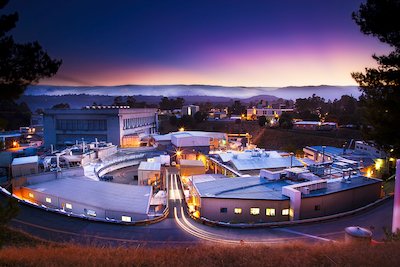
www.slac.stanford.edu
Menlo Park, San Mateo County (AD-24, SD-13)
Chi-Chang Kao, PhD, Director
Erika Bustamante, State Government Relations [email protected]
Melinda Lee, Communications [email protected]
ACCELERATING PARTICLES AND THE FUTURE
The people, expertise and facilities at SLAC National Accelerator Laboratory (SLAC) offer potential to transform nearly every sector of our economy.
These include studies of the very small, fundamental processes of chemistry, to the very large exploration and understanding of the cosmos, dark matter, and dark energy. SLAC experts have a long record of developing novel instruments and technologies to provide unparalleled insight into the natural world — and they lead and participate in many large-scale national and international scientific collaborations.
Stanford University operates SLAC for the Department of Energy’s (DOE) Office of Science. Located in Menlo Park, SLAC is home to the world’s premier ultrafast X-ray science center. Extremely bright and fast X-ray pulses are used to create movies of atomic and molecular structures and interactions with unprecedented precision — driving advances in energy science, human health, industrial chemistry, novel materials, information technology, and more.
By the Numbers
0
Employees0
Scientists & Engineers0
& Undergraduate Students (2019)$0
Million (2019)$0
Million (2019)$0
Million to CA Businesses (2019)$0
Million to Small Businesses (2019)The SLAC National Accelerator Laboratory (SLAC) contributes to California’s global reputation as
a hub of innovation. SLAC invents, develops, and operates sophisticated particle accelerator and X-ray technology and other scientific tools, including sensors, detectors, controllers, lasers, and systems for working with torrents of data and images. SLAC also develops novel laser architectures for our own research and work with local laser firms, further securing California as a hub of the optical laser industry. Through CalCharge, SLAC supports California energy storage firms.
Each year, SLAC hosts thousands of researchers who come here to use its sophisticated X-ray facilities for a wide range of basic and applied science — including California companies developing new pharmaceuticals, improving chip manufacturing and developing sensor technology for self-driving cars.
SLAC has deep ties to a major university — their employees are Stanford University employees, and the SLAC director is a dean of Stanford. SLAC’s expertise and ties with Stanford are a powerful combination, and allow them to provide unique educational experiences and serve as a vital training ground for the nation’s future scientific workforce. SLAC educates the public through tours, lectures, and outreach programs, and it also provides internships and fellowships to students and early career professionals.
SLAC has world-leading expertise in the design, engineering, and fabrication of advanced electronics, sensors, detectors, instrumentation — in addition to largescale data handling and computing systems, and associated facilities that help advance real-world applications. These include:
1. Structural biology research aimed at understanding disease and developing and improving treatment.
2. Next-generation batteries, improved manufacturing techniques for semiconductors, solar cells and other products.
3. Scientific computing, and control system hardware and software.
4. Improved medical imaging.
5. Electric grid modernization and more efficient catalysts for energy and industry.
6. Tracing and mitigating environmental contamination.
7. Next-generation particle accelerator technology.
On the ground, SLAC has the ability and knowledge to manage major, complex scientific infrastructure projects that require the development of entirely new technologies. And at the edge of human exploration, SLAC’s experts can guide us in understanding the context and importance of dark matter, dark energy, particle physics — and the evolution of the cosmos itself.
“Silicon Valley X-ray Laser Used To See Attosecond Electron Movement” – Forbes, Dec 2, 2019
“New Particle Accelerator Fits on a Silicon Chip” –Scientific American, January 4, 2020
“California Scientists Build A Camera To Take Pictures Of Huge Swath Of Sky” – NPR, September 8, 2020
 “SLAC has long been in the forefront of innovation, pushing the merely imaginable into the realm of reality. SLAC continues to break new ground across its research portfolio. Ranging from preparation and early action solutions to real-time monitoring and response, as well as recovery, the work of SLAC scientists today in disaster resilience research resonates particularly strongly.” — Senator Josh Becker (D-San Mateo)
“SLAC has long been in the forefront of innovation, pushing the merely imaginable into the realm of reality. SLAC continues to break new ground across its research portfolio. Ranging from preparation and early action solutions to real-time monitoring and response, as well as recovery, the work of SLAC scientists today in disaster resilience research resonates particularly strongly.” — Senator Josh Becker (D-San Mateo)
 “SLAC National Accelerator Lab continues to push the frontiers of our fundamental scientific knowledge. Their unique capabilities play a key role in establishing our scientific leadership and laying the groundwork for our progress toward a clean, sustainable energy future.” — Assemblymember Marc Berman (D-Palo Alto)
“SLAC National Accelerator Lab continues to push the frontiers of our fundamental scientific knowledge. Their unique capabilities play a key role in establishing our scientific leadership and laying the groundwork for our progress toward a clean, sustainable energy future.” — Assemblymember Marc Berman (D-Palo Alto)


